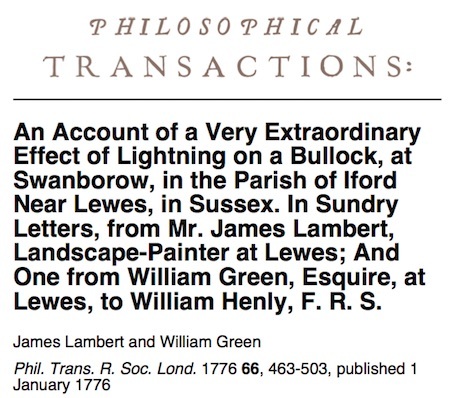Marc Abrahams's Blog, page 239
November 22, 2016
Selfies and sharks, and statistical dangers
Comparisons of selfies and sharks, and of pretty much any pair of things, come out differently depending on how careful you are in making — or judging — the comparison. Gary Smith, of Ponona College, explains:
We are now told that selfies are more than dangerous than sharks, with 8 deaths this year from shark attacks this year, compared to 12 reported deaths related to taking ill-advised selfies. It is a funny story, but it is a classic mistake.
The selfie/shark story reminds me of a book that once calculated the probabilities of “being injured by various items around your house” and concluded that, “As the figures show, our homes are veritable booby traps. Even your cocktail table is out to get you. These accounted for almost 64,000 injuries, more than all ladders [62,000 injuries].” With 74,050,000 U.S. households, they calculated the probability of being injured by a cocktail table as 64,000/74,050,000 = 0.00086 and the probability of being injured by a ladder as 62,000/74,050,000 = 0.00084.
These calculations are the probability that a reported injury involved a table or ladder, not the probability of being injured by using a table or ladder. A study of the dangers of tables and ladders should take into account how often tables and ladders are encountered, not how many households there are.
In the same way, to calculate the probability of being injured while taking a selfie, we need to divided 12 by the number of selfies taken (a lot!), and compare this to 8 divided by the number of swims in shark-infested waters (not so many!).
If we apply the selfie/shark mistake to other Darwinian activities, we might conclude that selfies are more dangerous than swallowing knifes and juggling chain saws. Don’t.

November 21, 2016
Leaders’ inspirational appeal increases post-mortem (new study)
“There is a great deal of interest in understanding what leaders can do to increase their charisma.” And a radical new concept on charisma-enhancement is presented in The Leadership Quarterly, Sept. 2016 – sadly for aspiring leaders, it involves their death.
“In the present research, we seek to advance our understanding of the nature and origins of charisma. We do this by examining the impact of a person’s death on observers’ inclination to see them as charismatic. We argue that following a person’s death, people will perceive a stronger connection between an individual and the social groups that they belong to, and that this can increase their charismatic appeal.”
An experimental research project involving 400 US adults, and carried out using Amazon’s Mechanical Turk facility, asked questions about the charismatic appeal of an inspirational (ex)leader – coming to the following conclusion (with some bad news for Woody Allen) :
see: Steffens, N.K., et al., Dying for charisma: Leaders’ inspirational appeal increases post-mortem, in The Leadership Quarterly, online advance publication, Sept. 2016.
Note: Charisma is quite difficult to define – and unfortunately Improbable has not been able to find a definition in the paper.

November 19, 2016
New research on the fluid dynamics of the Boston Molasses Flood
A new scientific analysis aims to understand the fluid dynamics of the Boston Molasses Flood. The bursting of an enormous (about 2 million gallons) tank of molasses created one of the biggest disasters ever to hit that city. Although it happened almost a century ago — on January 15, 1919 — there’s been only a vague scientific understanding of how the molasses flowed. Estimates from that era said that a 30-foot-tall wall of molasses washed over Boston’s North End neighborhood at a speed of about 35 miles per hour.
Nicole Sharp will present the first findings of her investigation, at the American Physical Society Division of Fluid Dynamics meeting, in Portland, Oregon. The specific when and where: Monday, November 21st, 6:01pm, Room E147-148. The session is called “In a sea of sticky molasses: The physics of the Boston Molasses Flood.” Colleagues Jordan Kennedy and Shmuel Rubinstein, both from Harvard University, will be part of the presentation. This short video gives a preview:
Nicole Sharp is of course the creator of FYFD, the world’s most popular web site about fluid dynamics. Until very recently she lived in the Boston area, where she (among other things) began the extensive (and still ongoing) research into what happened in that long ago sticky, deadly flood.
You may also be familiar with Nicole Sharp from her adventures on the Improbable Research podcast where, most recently, she explored a physics study as to whether cats can be both a solid and a liquid (and in the process got to wax happy at the chance to talk about the mathematical physics concept called “the Deborah Number”).

Medical assessment of comedians poking each other in the eye
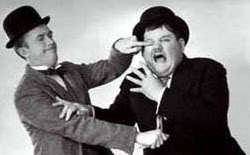 In many old movies, slapstick comedians would poke other comedians in the eye. A Dutch medical team, writing in a Scottish medical journal, calculated the physical damage this would have done if the eye-poking had been real eye-poking, not just pretend, poking-fun poking:
In many old movies, slapstick comedians would poke other comedians in the eye. A Dutch medical team, writing in a Scottish medical journal, calculated the physical damage this would have done if the eye-poking had been real eye-poking, not just pretend, poking-fun poking:
“Eye trauma in Laurel and Hardy movies – another nice mess,” Lara D.A. Zegers and Richard H.C. Zegers, Scottish Medical Journal, epub November 17, 2016. The authors are respectively at Gerrit Rietveld College in Utrecht, and Diakonessenhuis Utrecht/Zeist. They explain:
One of the characteristics in Laurel and Hardy films is a lot of physical violence. The present study examines the occurrence of eye trauma in Laurel and Hardy movies and discusses the impact they could have been had if the films were set in reality.
All 92 movies starring Laurel and Hardy as a pair in leading roles were watched together by the authors and were scored for any eye trauma. Eighty-eight eye traumas happened, of which 48% were directed at Hardy. The eye poke was the most frequently occurring eye trauma and the traumatic corneal abrasion was very likely the most frequently occurring injury. Among the most serious causes of eye trauma were the pin of a door handle, a stick, a champagne cork, a tree branch and tacks.
Conclusion: Without a doubt, if their films had been reality, especially Hardy but also Laurel and several other people, would have suffered from serious eye injuries caused by the 88 eye traumas.
Here are Laurel and Hardy performing in the eye-opening film called “Hog Wild”:
RTV Utrecht wrote up an appreciation of the medical team: “Utrechtse oogarts onderzoekt de dikke en de dunne“.

November 18, 2016
Dead Reckoning: Death by Selfies
As more people ascend to heaven, or whatever, while photographing themselves, more researchers try to measure the what, where, and how of it. Picture, if you will, this new study done by scientists in India and the USA:
“Me, Myself and My Killfie: Characterizing and Preventing Selfie Deaths,” Hemank Lamba, Varun Bharadhwaj, Mayank Vachher, Divyansh Agarwal, Megha Arora, Ponnurangam Kumaraguru, arXiv:1611.01911v2 [cs.SI] 11 Nov 2016. The authors, at Carnegie Mellon University, Indraprastha Institude of Information Technology, and the National Institute of Technology, Tiruchirappalli, report:
“since March 2014, 127 people have died and many have been injured while trying to click a selfie…. In this work, we perform a comprehensive analysis of the selfie-related casualties and infer various reasons behind these deaths. We use inferences from incidents and from our understanding of the features, we create a system to make people more aware of the dangerous situations in which these selfies are taken.”
Here’s further detail:
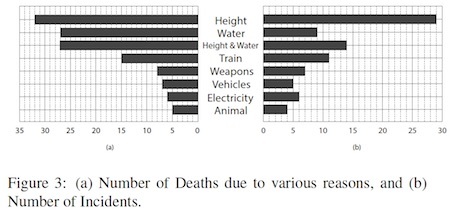
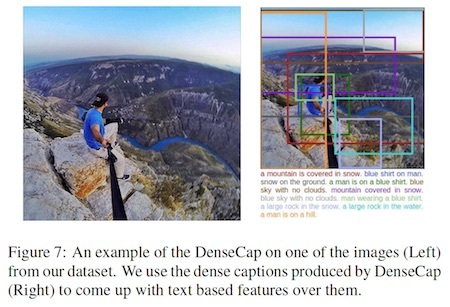
MIT Technology Review looked over the report, and added a bit of commentary: “Data Scientists Chart the Tragic Rise of Selfie Deaths“.
UPDATE: Maggie Fox of NBC News interviewed co-author Kumaraguru.

November 17, 2016
Poo: It came from the Bishop
“Danes identify Aalborg bishop’s 300-year-old poo” is the BBC News headline. The report begins:
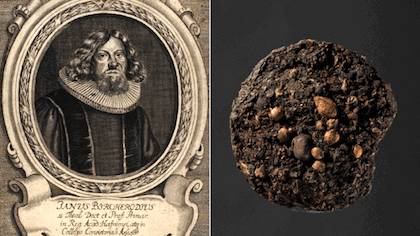
A lump of faeces stored in the back of a Danish museum has been traced back to a bishop who lived in the city of Aalborg at the end of the 17th Century.
Researchers discovered the lump in a broken bottle. Analysis revealed remnants of an exotic diet of fig, grapes, pepper and buckwheat.
The faeces were found when the old bishop’s manor was excavated in 1937.
The team then decided it had belonged to Bishop Jens Bircherod, from an island whose residents ate buckwheat.
“It all fits nicely with the bishop who lived in that house from 1694 to 1708,” says Jette Linaa, from Moesgaard Museum in the Danish city of Aarhus….
(Thanks to Jonathan Fisk for bringing this to our attention.)
Museums are good places to view treasures that come from bishops. The Hunterian Museum, in London, proudly displays the rectum of the Bishop of Durham. We discussed this in a report in The Guardian.

The ‘Champagne Toast Position’ test – a new diagnostic method for shoulder pain
The photo above depicts the newly developed ‘Champagne Toast Position’ test for examining the electromyographic activity of the supraspinatus muscle. A research team from the Department of Orthopaedic Surgery, Rush University Medical Center, Chicago, US, developed the test as a more effective alternative to Jobe’s test (a.k.a. the Empty Can Test) . . .
The problem:
“[…] numerous studies have demonstrated Jobe’s test (also referred to in the literature and in common communication as the empty can test) to be insensitive, nonspecific, and inaccurate.”
The experiments:
“[…] in the course of the trials, subjects were instructed to ‘make a toast’ to position the shoulder in relative ER [external rotation]. Subjects were instructed to ‘pour a glass out onto the floor between their shoes’ to position the shoulder in relative IR [internal rotation]. Again, this was to attempt to provide a familiar activity cue to the patient for position and action.”
The results:
“Testing of abduction strength in the champagne toast position, i.e., 30º of abduction, mild ER, and 30º of flexion, better isolates the activity of the supraspinatus from the deltoid than Jobe’s empty can position.”
See: ‘The champagne toast position isolates the supraspinatus better than the Jobe test: an electromyographic study of shoulder physical examination tests’ in the Journal of Shoulder and Elbow Surgery, Volume 25, Issue 2, Pages 322–329 (2016)

November 16, 2016
Podcast #90: Effect of Eating Garlic on Armpit Odor
If a person eats garlic, does that change the person’s armpit odor? Jean Berko Gleason, a researcher who is disgusted by both garlic and armpit odor, helps us appreciate research on that very question, in this week’s Improbable Research podcast.
SUBSCRIBE on Play.it, iTunes, or Spotify to get a new episode every week, free.
This week, Marc Abrahams discusses a published garlic/armpit study, with dramatic readings from Boston University psychology professor emerita Jean Berko Gleason. Early in her career, Gleason gained fame for inventing the WUG Test. The WUG test revealed that young children have impressively subtle abilities to learn — and use — new bits of language.
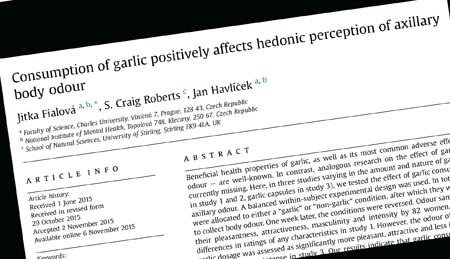
For more info about what we discuss this week, go explore:
“ Consumption of Garlic Positively Affects Hedonic Perception of Axillary Body Odour ,” Jitka Fialová, S. Craig Roberts, and Jan Havlíček, Appetite , vol. 97, 2016, pp. 8-15. Fialová and Havlíček are at Charles University, in the Czech Republic. Roberts is at the University of Sterling, in Scotland.
Jan Havlíček is a 2014 Ig Nobel Prize winner, for research (unrelated to this) involving cats and mental health.
Garlic .
Armpit odor .
The mysterious John Schedler or the shadowy Bruce Petschek perhaps did the sound engineering this week.
The Improbable Research podcast is all about research that makes people LAUGH, then THINK — real research, about anything and everything, from everywhere —research that may be good or bad, important or trivial, valuable or worthless. CBS distributes it, on the CBS Play.it web site, and on iTunes and Spotify).
BONUS: A nice appreciation of Jean and her words, in the Huffington Post: “These Are The Words Even A Linguist Hates — This goes way beyond ‘moist.’ “

November 15, 2016
The importance of dung, to an eventual writing career
Gorilla dung matters. This came to mind today, when I saw the news about a particular gorilla: “Famous Dian Fossey Gorilla Presumed Dead at 38“.
In ninth grade biology class, I wrote a report about a book about gorillas and about Dian Fossey and other scientists who studied those gorillas.
I was impressed at how dung had played such a central role in Fossey’s work and in the book, so that was a major theme in my book report.
The teacher, who I now realize was probably not the very best teacher, gave me an F (the lowest possible grade — F for failure, or flunk, or whatever) because, she said, I had concocted the facts. The book could not have said what I said it said, she said. When I then brought the book to her, she refused to look at it.
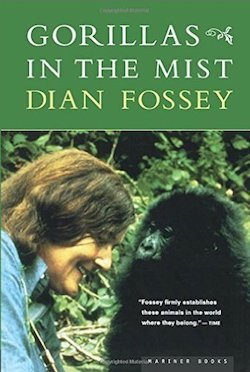
The most famous book about Dian Fossey, one she wrote herself. This is not the book that got me into minor trouble.
(This was a “choose a book, read it, and write a report about it” assignment. I no longer remember the name of the book. Fossey later wrote a book called Gorillas in the Midst, which became very well known and was made into a movie that became even better known.)
I did not realize that, in a way, this foreshadowed my eventual career (writing about things that make people laugh, then think).
Gorilla dung continued, and continues, to inform and fascinate some of the scientists who study gorillas. Here’s one of many gorilla-dung-centric studies. I rather hope it will get some current ninth grade student into trouble:
“Using Dung to Estimate Gorilla Density: Modeling Dung Production Rate,” Angelique F. Todd, Hjalmar S. Kuehl, Chloé Cipolletta, and Peter D. Walsh, International Journal of Primatology, vol. 29, 2008, pp. 549-563.

Prize-winning biscuit-dunking analyst assesses redheads’ lighting-strike risk
Len Fisher, who was awarded an Ig Nobel Prize in physics in 1999, has devised some possible insights stemming from an old report about a red-haired bullock that was struck by lightning. Fisher wrote it up, with the headline “If you want to survive a lightning strike, be a redhead“.

Marc Abrahams's Blog
- Marc Abrahams's profile
- 14 followers





